Transitioning from Dominant to Minority Language

This guide is dedicated to parents who want to switch from the dominant community language to the minority language at home. Perhaps you’re fluent in English and wondering how to get your child to speak a minority language.
For nearly a decade, I’ve been raising my children bilingual. At various points, my children have been monolingual and even trilingual.
Over the years, I’ve watched my children learn and forget words in various languages. This was no surprise because we live in a monolingual community. During my childhood, I completely forgot my heritage language and re-learned Chinese as a parent.
So, as an American family, we’ve meandered between dominant and minority languages countless times.
The good news is that it’s possible to transition from the dominant to the minority language. It’s not easy. But it’s also not too late. You can make the switch with love rather than force.
What to expect the first time you switch languages

Often, when you try something new for the first time, you and the people around you might feel awkward or uncomfortable. This includes speaking the minority language.
Although it can feel unnerving, it doesn’t necessarily mean you’re doing something wrong. You and the people around are just not used to it …yet.
My daughter was around two years old when I first tried to speak Chinese to her. And she wasn’t happy about it. She had been comfortable in English, chatting in sentences, and my foreign words were startling and baffling.
“No Chinese, mommy! Please stop talking in Chinese! English only!”
Around age three years, this same child voiced the same aversions when our new nanny was trying to talk to her in Korean.
In both situations, speaking Chinese and Korean felt awkward for nearly a year before they became a habit. It’s important to know that the awkwardness is normal and can last for quite some time.
Fast forward to now, my children are in elementary school and still conversational in Mandarin Chinese. Unfortunately, they lost most Korean language skills.
How did we transition from speaking English to a mix of English and Chinese, and eventually mostly Chinese? And why did my children eventually forget Korean?
The last question is easy to answer: unfortunately, Korean exposure was inconsistent. We also realized that dropping the language was the right decision for our family.
Keep reading to learn how my children and I developed a positive relationship while speaking Chinese as a minority language.
3 steps to speaking the minority language at home
Here’s a summary of the minority language recipe, which I’ll follow with detailed examples.
- Build the minority language into the daily routine.
- Make new and fun memories in the minority language.
- Make the minority language accessible and noticeable.
1. Speak the minority language during daily routines
This may seem obvious, but the first and most fundamental step is for at least one caregiver to speak the minority language consistently.
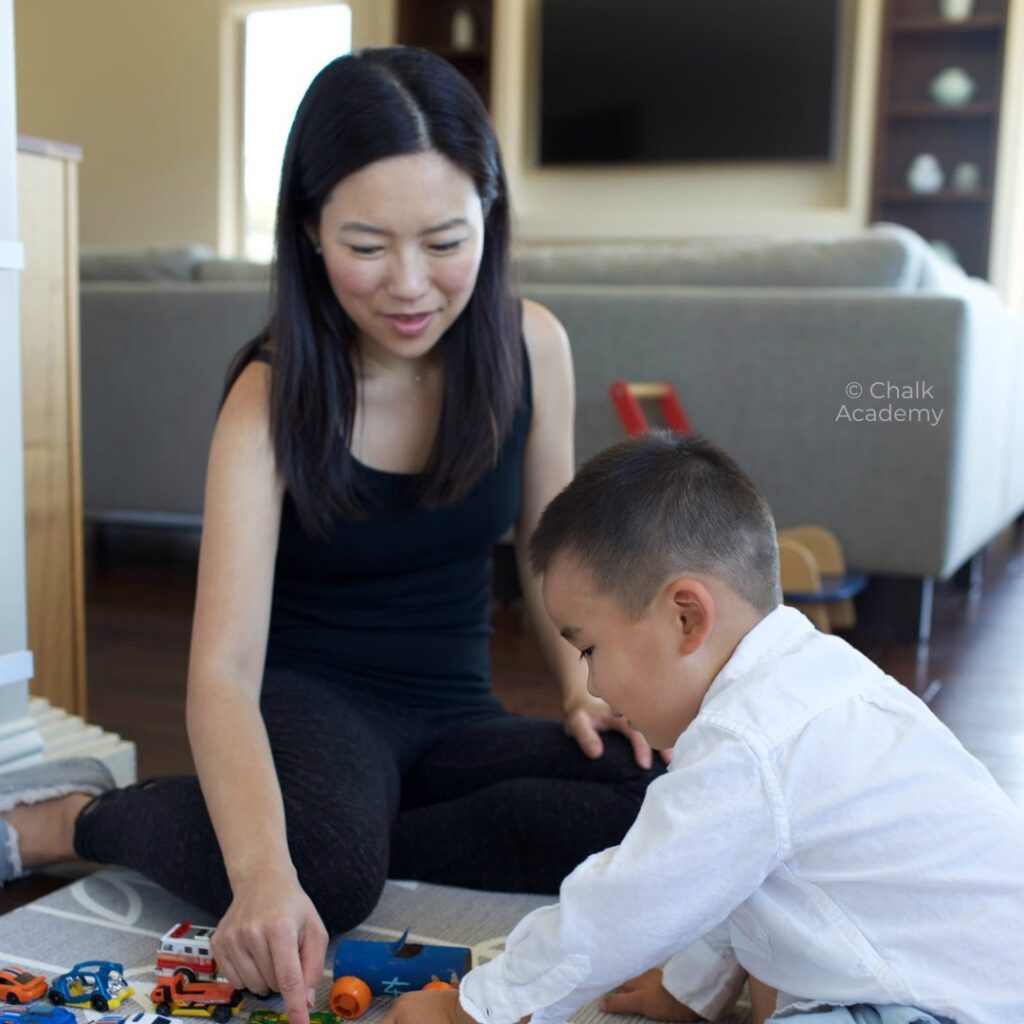
At the bare minimum, one caregiver must commit to speaking the minority language.
Many bilingual and multilingual families use the “One Person, One Language” (OPOL) method to establish a consistent relationship in a particular language between caregiver and child.
Take some time to listen to family videos and evaluate your interactions with a humble and open mind. You may be surprised that you are not consistently speaking the target language, even if you think you are.
Note: If you have more than one minority language speaker at home, share this article to encourage teamwork. If more people are able to speak the minority language at home, it takes the pressure off of you, and your child will become more acclimated to the language. If you’re solo bilingual parenting, you can take the reins if your heart is called to the cause (and if you have time).
When to make the switch to a minority language
Parents often wonder when they should transition from dominant to minority language. Perhaps carpe diem feels inconvenient, but there’s often no perfect time.
If you have a baby, you’re probably sleep-deprived and beyond exhausted. Here’s the silver lining: from a language standpoint, this is the easiest time to switch.
Try this: 5 Things Parents Should Do When Raising a Bilingual Baby
The older your child, the harder the transition may be. But it’s still doable.
Parents can take advantage of occasions when they are home more than usual, such as maternity or paternity leave, or even a long weekend. Interestingly, studies show that the pandemic was a bilingual launch pad for many families stuck at home.
Similarly, some parents delay preschool or consider homeschooling temporarily (or indefinitely) to establish the minority language at home.
Of course, traveling can inspire interest in a new language. Though a vacation could be a convenient time to speak a minority language, you don’t need to wait.
You can plant the seeds and nurture the minority language at home.
Shirley, a mother in a bilingual parenting group I used to run, shared this inspiring testimony of switching to a minority language (Chinese) during the pandemic.
Well, this is happening. My 6-year-old child has started reading bridge books, and 10 months ago he didn’t speak Chinese. You heard me right. I didn’t speak Chinese with my kids until 10 months ago, for reasons too many for this post. Mainly because I didn’t have enough support; even my mom speaks English to my kids.
When my second one was born, I briefly switched to Chinese, but after 3 months, I went back to work, and they went back to daycare in a rural town around people who only speak English. Soon the only Chinese they were hearing were from the children’s songs in the car and one of five books I bought on Amazon.
When my second started talking, whenever I put in a Chinese CD, they would scream “No Chinese!” from the backseat, so that stopped too. I would tell anyone that I never EVER use Chinese in my professional and personal life. Or that I always get confused in both languages so I don’t want to subject them to that.
That all changed when I read Chalk Academy. It gave me hope that I can teach my children Chinese in a sustainable way, as the only Chinese input miles around. For the first four months of switching to all Chinese, they ignored me and it felt like an eternity. My husband was immensely supportive through my outbursts and tears. After four months they were conversational.
Just as I started feeling like I could never compete with their English language acquisition, the stay-at-home order started. From then on, we hiked, swam, gardened, and read in Chinese.
How to make the switch
As with anything, the beginning is the hardest. Kids who show a strong preference for English will likely need to be eased into the minority language at home.
Here are the gradual steps we took with examples in Chinese that you can apply to your target language.
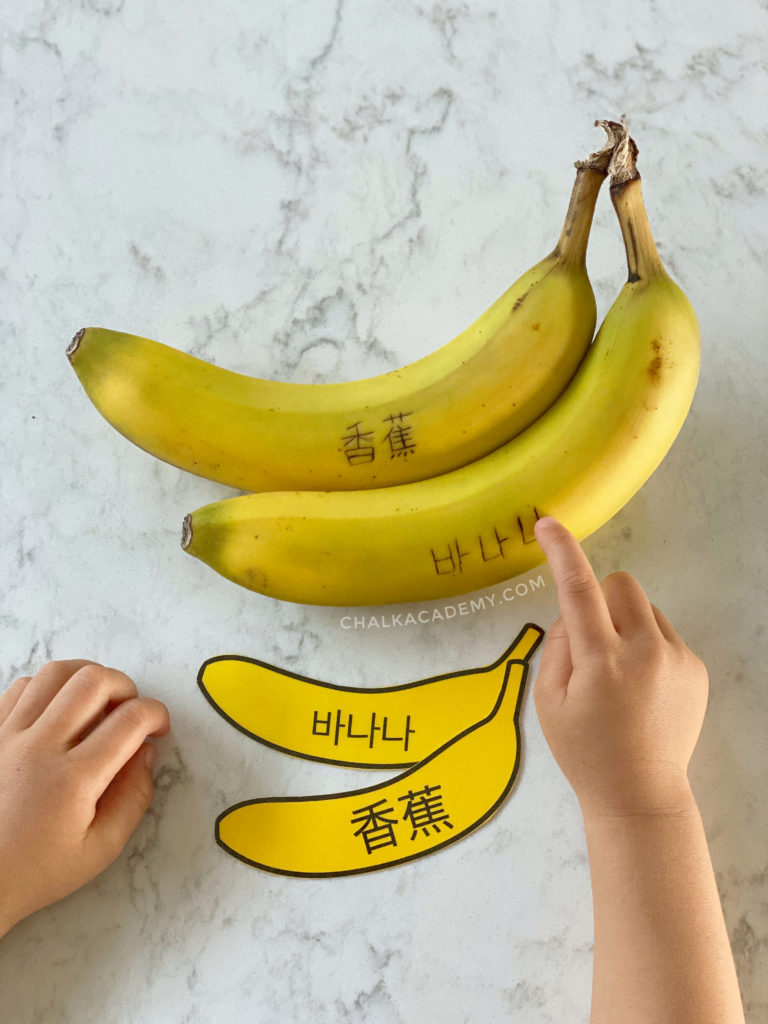
Stage 1: Language building
- In the first few months, say each word or phrase in both languages. For example, if your child tells you what she wants to eat for breakfast, repeat what she says in English once (acknowledges that you are listening), then again in Chinese at least three times while pointing to the food.
- If your child is overwhelmed and resistant, or if you feel embarrassed and uncomfortable, start with one or two new words per day. Mix it into your dominant language, for instance, “This is a 香蕉 (xiāngjiāo / banana).”
- Introduce common words such as verbs, directions, body parts, food, emotions, and hygiene. Your child will have a better chance at mastering daily routine words; in turn, this will build confidence for learning more new words.
- Use body language to explain new words in the minority language without resorting to English. For example:
- If you are trying to express sadness, pout, and dramatically fake-cry!
- If you are talking about the human body, point to your 眼睛 (yǎnjīng / eye),耳朵 (ěrduǒ / ear),鼻子 (bízi / nose),嘴巴 (zuǐbā / mouth),头发 (tóufǎ / hair) while saying each word in the minority language. These words need no English translation.
- Show a picture as a visual cue if you don’t have a physical object. This can help prevent translating minority words in English, the dominant language, and detract from your minority language efforts. I emphasize realistic images because cartoons in Chinese or other languages may confuse a new learner. When caricatures are too abstract, you spend more mental effort deciphering the picture instead of listening to the minority language.
- Gradually build vocabulary by increasing to phrases and sentences, and later longer duration and frequency until the goal of full language immersion.
Stage 2: Language reinforcement
Recasting and multiple-choice questions are effective strategies for reinforcing the minority language and building confidence.
- Recasting: If your child says a phrase in the dominant language, gently repeat what they said in the minority language. For example:
Child: I want to eat fruit for breakfast You: 谢谢你告诉我你早餐要吃什么。你想吃水果, 对吧? (Xièxiè nǐ gàosù wǒ nǐ zǎocān yào chī shénme. Nǐ xiǎng chī shuǐguǒ, duì ba? / Thank you for telling me. You want to eat fruit, right?) Child: Yes, I want to eat fruit. You: 我明白了。我们一起用中文说吧! 水果。我想吃水果。 请给我水果。 (Wǒ míngbáile. Wǒmen yīqǐ yòng zhōngwén shuō ba! Shuǐguǒ. Wǒ xiǎng chī shuǐguǒ. Qǐng gěi wǒ shuǐguǒ. / I understand. Let’s say it in Chinese together! Fruit. I want to eat fruit. Please give me fruit.) Child: 请给我水果。(Qǐng gěi wǒ shuǐguǒ. / Please give me fruit.)
- Multiple choice questions: When you ask questions, offer a few options to prompt your child to reply in the minority language. For example, in the minority language, you can ask, “Would you like to wear a blue or green shirt?”
To encourage children to speak the minority language, positive affirmations are necessary. Try not to criticize pronunciation and grammar errors.
Expect mistakes; frequent interruptions and corrections may discourage your child from attempting the minority language. If your child says something wrong, try to remain neutral and objective.
Instead of “不, 你说错! (No, you said that wrong!)”
Try a response like “嗯,我不明白。你的意思是 ____? (Hmm, I don’t understand. Do you mean ____?)” which shows that you are actively listening and gives a chance to model proper speech and language.
A “repeat-back-feedback-question” sandwich gives an opportunity to model correct pronunciation and invite a reply.
Try this: Effective Ways to Praise Kids Instead of “Good Job” (Chinese and English)
Stage 3: Language reflection

This step should actually be a continuous part of the bilingual parenting journey. Revisit your goals and adjust as needed.
If language learning is a family value, share that with your child. This is especially powerful if speaking the minority language is a special link to your heritage and relatives.
As with any part of parenting, there will be ups and downs. That’s normal!
Do whatever you can do without torturing yourself. Remembering your “why” will help keep you motivated during this challenging endeavor.
Related: How to Raise a Child Trilingual? Pros and Cons to Consider
2. Make new and interesting memories
Interesting experiences make a huge difference for multilingual families struggling with the minority language.
Even though I’m still improving my Chinese fluency skills, fun and connection are the magic ingredients to our family’s success.
Why does the minority language need to be extra fun?
When kids are doing exciting things in the dominant language at school and pretty much everywhere, they will naturally lose interest in the minority language.
After a fun day at school, my children easily switch to English when they reflect on their day and report what their teachers and friends have said and done.
Shortly after I started Kindergarten, I rarely replied to my parents in Chinese. English was the language I was using when making unique memories at school.
If the minority language is spoken with mundane activities only, such as reminders to practice piano and brush teeth, the dominant language will naturally be preferred. The minority language could be considered boring and less important.
Therefore, I suggest brainstorming…
How can I make the minority language special for my child?
First things first: you don’t have to be Martha Stewart to do something meaningful with your kids.
This step is relatively easy for babies and toddlers because everything is new and exciting. Even the grocery store can be exhilarating! Just try to talk in the minority language.
For older kids, the best thing you can do is to value your child’s interests. Connection and validation are paramount.
Play games
Speak the minority language while on a scavenger hunt, build with open-ended toys, and play with puzzles.
When I wrote the first version of this article years ago, I shared a story about my son and his grand plans to explore the dark with a flashlight.
We had a blast shining the flashlight on different things around the house, and I named as many things as I could Chinese.
He learned many new words because I supported his idea.
For example “这是一个搅拌机。你能说搅拌机吗?” (Zhè shì yīgè jiǎobànjī. Nǐ néng shuō jiǎobànjī ma? / This is a blender. Can you say “blender”?) Then he would repeat “搅拌机” (jiǎobànjī / blender).
Make new memories
Older kids who already prefer English will need more convincing that speaking a minority language is “cool”.
This is when hands-on experiences can make a big impact. Take your child to a new place or try a new recipe. If they’ve never had these experiences, this becomes a golden opportunity for the minority language to shine.
An example is a simple color explosion experiment with baking soda, vinegar, and food coloring.
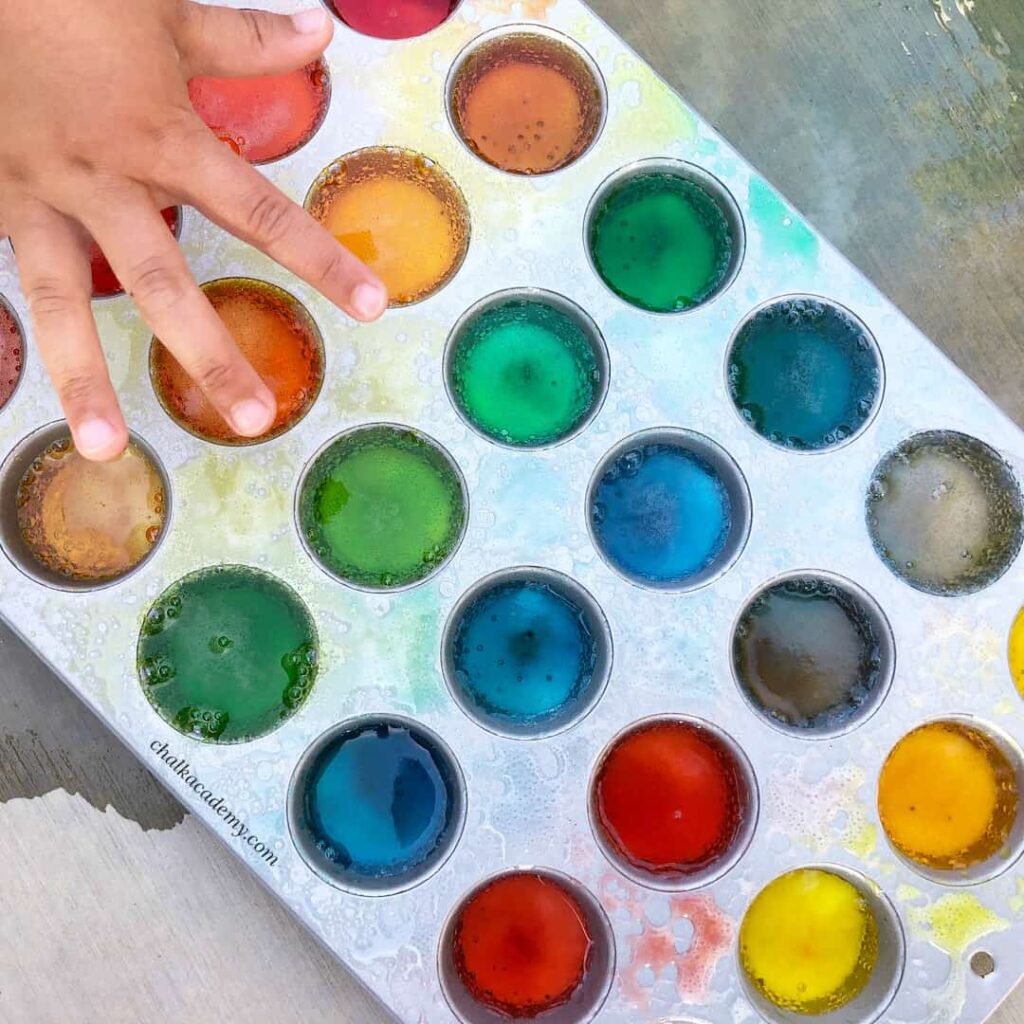
Based on my children’s interests and personalities, I knew this activity would be a great prompt for speaking the minority language.
Before we did this activity several years ago, I told my children: “Today, mama has something very cool to show you! But I am going to tell you about it in Chinese. It is a special experiment during which we will speak Chinese!”
Since they had never done anything like this with their dad or friends, there wasn’t pre-existing English vocabulary to compete with the new Chinese words they learned from the activity.

Cultural celebrations are another special way to encourage the family to speak the minority language.
Since my son loves LEGOs, we got Lunar New Year LEGO sets to experience fun traditions and legends through play.
Minority language opportunities are so rich through play. Follow your child’s lead, and find opportunities to describe your observations about actions, designs, positions, colors, and more in the target language.
Related: Why is My Child Not Paying Attention to Books in the Minority Language?
3. Make the minority language accessible and noticeable
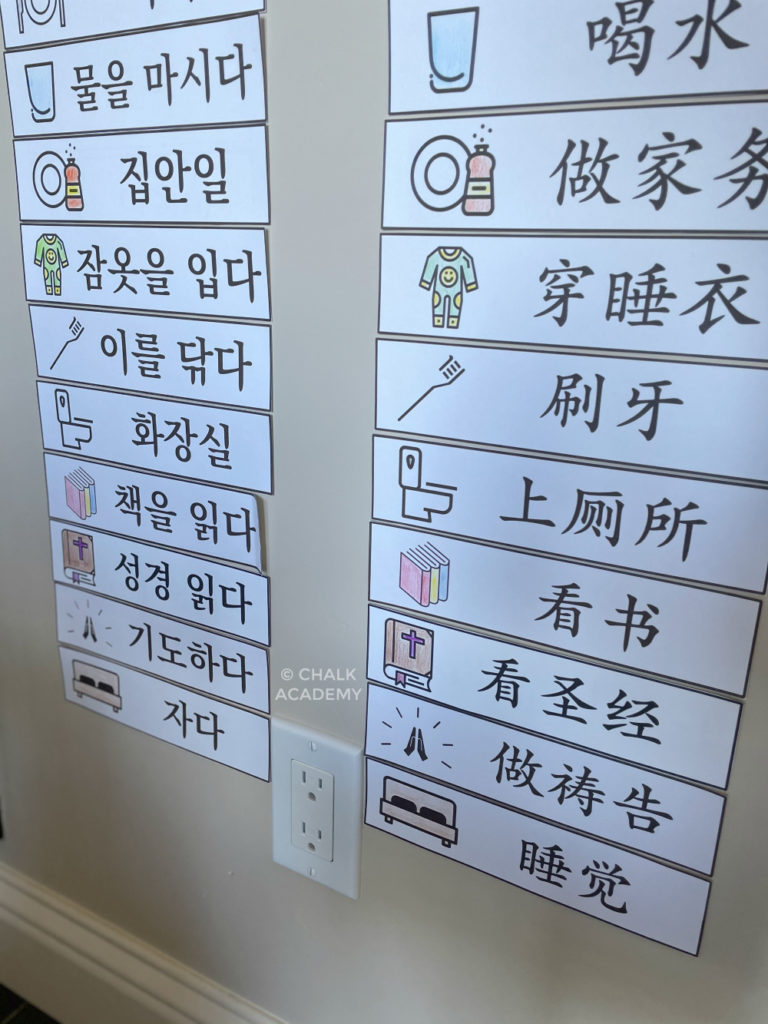
Since the dominant language is everywhere, your home may need some revamping to make the minority language noticeable and accessible.
You and your child will benefit from visual and audio triggers to speak the minority language.
For instance, a visual daily schedule in Korean and Chinese can remind a family to speak those minority languages throughout the day.
To optimize your efforts, get rid of distractions and obstacles, such as English television and talking toys.
The following articles can help you create an intentional environment for speaking the minority language at home.
Have you made the switch to the minority language?
What challenges and wins have you experienced with speaking the minority language at home? What’s holding you back from switching languages? Please share with the community in the comments below. Your story matters.

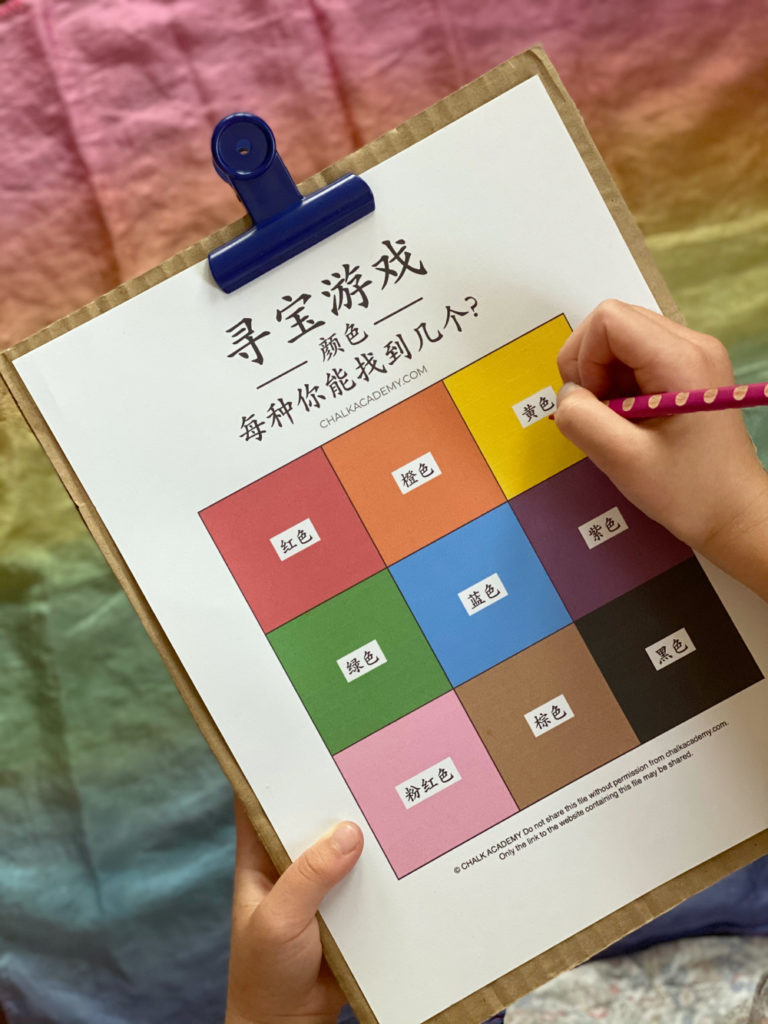
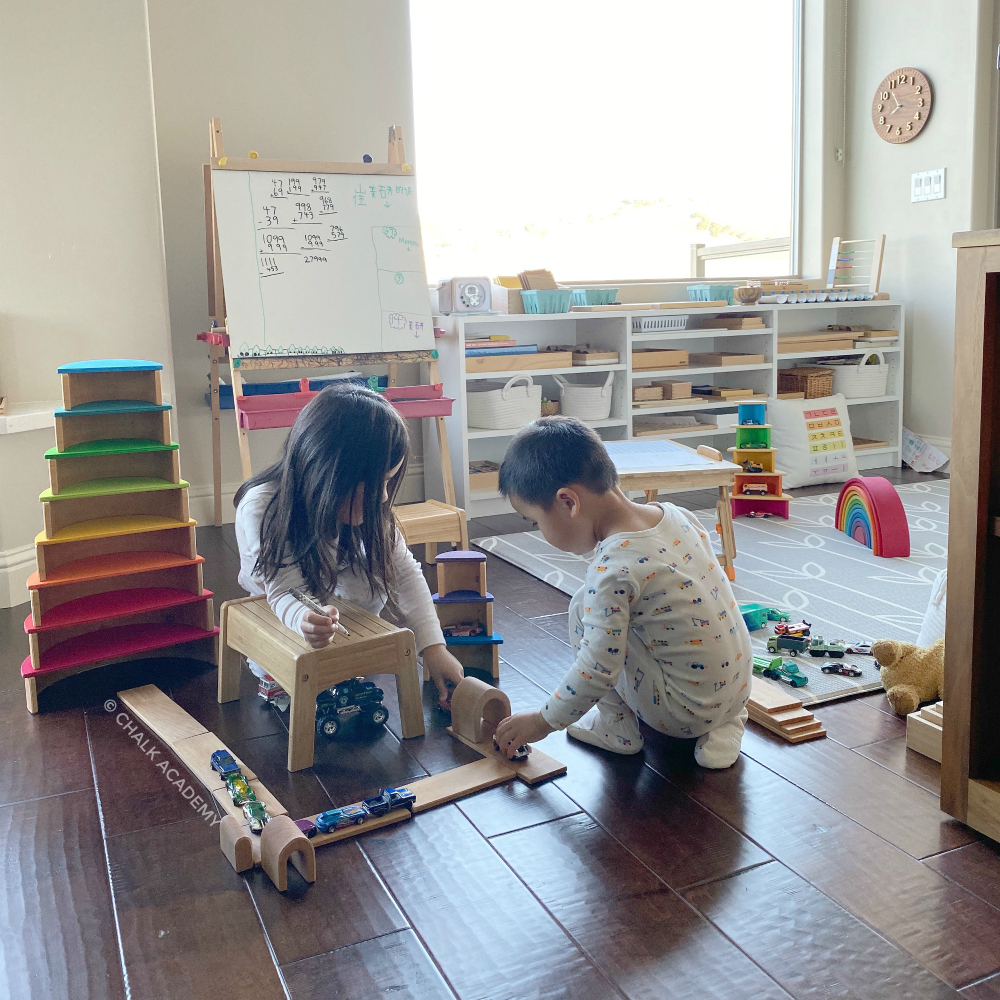

I live as a missionary in Tijuana Mexico. I am American and my husband is Mexican and we are both bilingual. I am with my 3yo daughter all the time and my husband only has a few hours with her at night. She speaks very well in full English sentences, but never responds in Spanish, regardless of the language we speak to her in. I have been speaking predominantly English and my husband does too, but we do switch back and forth a lot between language and she understands everything a 3yo can. How can I get to to respond in Spanish? Should I speak predominantly In Spanish now that she has a good handle on English?
Great read! I love how you provide parents with different alternatives to promote language acquisition at home. Very interesting and fun to read!